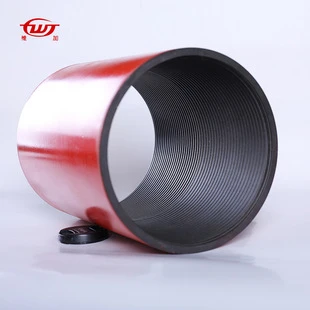- Afrikaans
- Albanian
- Amharic
- Arabic
- Armenian
- Azerbaijani
- Basque
- Belarusian
- Bengali
- Bosnian
- Bulgarian
- Catalan
- Cebuano
- Corsican
- Croatian
- Czech
- Danish
- Dutch
- English
- Esperanto
- Estonian
- Finnish
- French
- Frisian
- Galician
- Georgian
- German
- Greek
- Gujarati
- Haitian Creole
- hausa
- hawaiian
- Hebrew
- Hindi
- Miao
- Hungarian
- Icelandic
- igbo
- Indonesian
- irish
- Italian
- Japanese
- Javanese
- Kannada
- kazakh
- Khmer
- Rwandese
- Korean
- Kurdish
- Kyrgyz
- Lao
- Latin
- Latvian
- Lithuanian
- Luxembourgish
- Macedonian
- Malgashi
- Malay
- Malayalam
- Maltese
- Maori
- Marathi
- Mongolian
- Myanmar
- Nepali
- Norwegian
- Norwegian
- Occitan
- Pashto
- Persian
- Polish
- Portuguese
- Punjabi
- Romanian
- Russian
- Samoan
- Scottish Gaelic
- Serbian
- Sesotho
- Shona
- Sindhi
- Sinhala
- Slovak
- Slovenian
- Somali
- Spanish
- Sundanese
- Swahili
- Swedish
- Tagalog
- Tajik
- Tamil
- Tatar
- Telugu
- Thai
- Turkish
- Turkmen
- Ukrainian
- Urdu
- Uighur
- Uzbek
- Vietnamese
- Welsh
- Bantu
- Yiddish
- Yoruba
- Zulu
Understanding Casing Collar in Oil and Gas Drilling Operations
Understanding Casing Collars in Oil and Gas Operations
In the oil and gas industry, the integrity and efficiency of drilling operations heavily rely on various components, one of which is the casing collar. Casing collars play a crucial role during the drilling and completion phases of oil and gas wells. This article aims to delve into the significance, function, and types of casing collars, offering insights into their vital contribution to the stability of wellbores.
What is a Casing Collar?
A casing collar is a mechanical component used in the casing string of wells. Casing is the pipe that is inserted into the drilled borehole to provide structural integrity to the well. The casing collar serves as a marker and connector between sections of casing. It is typically thicker and wider than the casing itself, and it features a pronounced ledge or stop, allowing for the effective anchoring of various downhole tools and devices.
Functions of Casing Collars
1. Connection Point One of the primary functions of a casing collar is to act as a joint connection point between different segments of casing. This facilitates the easy assembly of casing strings, ensuring that they can be extended or modified as needed during drilling operations.
2. Depth Indication Casing collars serve as depth markers, helping drilling teams to accurately know the depth of the casing string within the well. This facilitates better planning for further drilling operations and eases the procedures for inserting tools or conducting assessments of well conditions.
3. Control Mechanism for Equipment Casing collars provide a stable anchoring point for various downhole tools such as packers, plugs, and perforating guns. These tools often need to be securely fastened at specific intervals within the well, and casing collars offer the necessary structural support.
4. Strength and Stability Casing collars enhance the strength and stability of the wellbore by providing reinforced sections. This is especially crucial in unstable geological formations, where additional support is needed to prevent collapse.
casing collar

Types of Casing Collars
There are several types of casing collars, each designed for specific applications and conditions
- Standard Casing Collars These are the most common type, utilized in various standard drilling operations. They have a straightforward design, facilitating easy connections between casing segments.
- Collars with Centralizers Some casing collars come equipped with centralizers, which help to keep the casing centered within the borehole, ensuring even cementing and minimizing the risk of differential sticking.
- Special Purpose Collars There are also customized casing collars designed for specific applications, such as those that require high-pressure resistance, corrosion resistance, or other specialized functionalities.
Importance in Drilling Operations
The use of casing collars is paramount in ensuring the overall success of drilling operations. They provide the necessary support structures that facilitate the stable installation of casing, enabling safe and efficient extraction of oil and gas. Without proper casing collars, the risk of well collapse or other operational failures increases dramatically, leading to costly setbacks and potential safety hazards.
In conclusion, casing collars are vital components in the oil and gas drilling process. Their roles as connectors, depth indicators, and anchors for downhole tools cannot be overstated. As advancements in drilling technology continue to evolve, understanding the importance of casing collars will remain crucial for ensuring the operational integrity and safety of wells. The future of the oil and gas industry hinges not only on the extraction technologies employed but also on the supportive structures that fortify drilling operations, with casing collars playing a central role in this equation.
-
Tubing Pup Joints: Essential Components for Oil and Gas OperationsNewsJul.10,2025
-
Pup Joints: Essential Components for Reliable Drilling OperationsNewsJul.10,2025
-
Pipe Couplings: Connecting Your World EfficientlyNewsJul.10,2025
-
Mastering Oilfield Operations with Quality Tubing and CasingNewsJul.10,2025
-
High-Quality Casing Couplings for Every NeedNewsJul.10,2025
-
Boost Your Drilling Efficiency with Premium Crossover Tools & Seating NipplesNewsJul.10,2025







